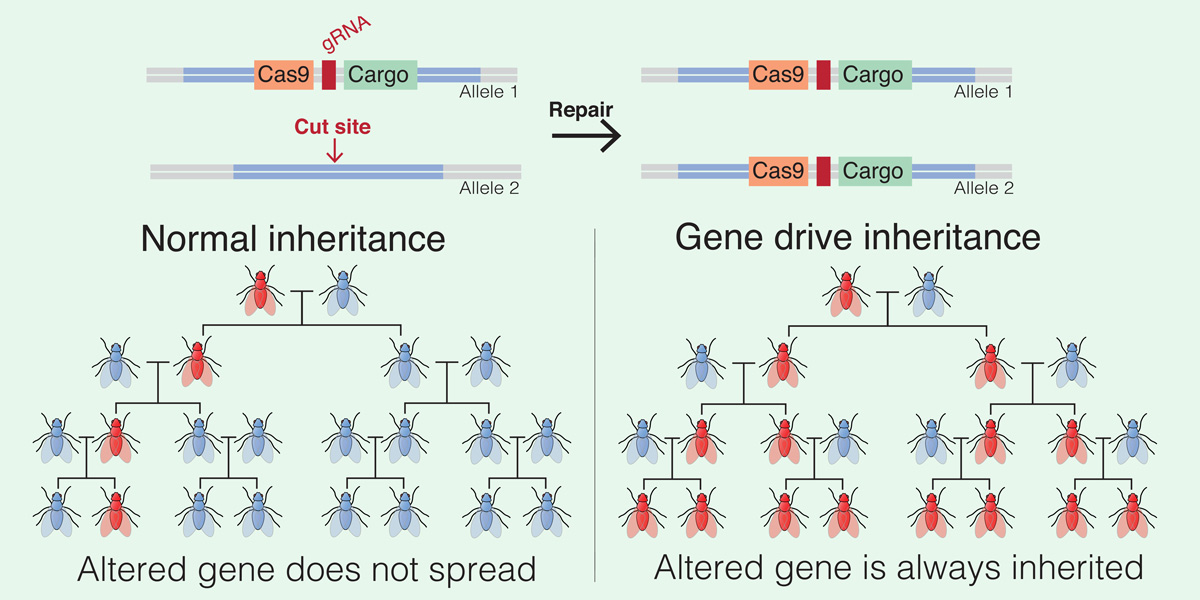
The emerging technology is currently "not fit for application" due to uncertainties, serious risks, and limitations
Gene drives should be treated with the utmost precaution, international scientists conclude in a new and comprehensive study which will be published and presented on May 24 in Bern, Switzerland. The emerging technology is currently not fit for application due to important uncertainties at the scientific, technical and practical levels and due to serious limitations with their functioning, the study shows.
Most gene drives are intended for release in the wild and their influence on ecosystems is unknown, potentially irreversible and very likely to cross national borders. “Existing biosafety rules are deficient and not fully equipped to manage the unique risks posed by gene drives”, says Lim Li Ching, expert on international regulation and an author of the study. Until effective, legally binding international regulation is in place, as well as genuine public engagement, no gene drive organisms (GDOs) should be released, the study recommends. “The public must be involved from the very beginning in defining the problems to be addressed and setting priorities, without an a priori preference for gene drives as a solution”, adds Tamara Lebrecht, project coordinator and another author of the study.
Rather than starting from the suggestion that gene drives will solve problems like invasive species or the spread of diseases like malaria, all available potential solutions and paths to development for such problems should be weighed against each other. Other solutions are often already available or around the corner but may miss the political will and/or funding needed for their development and application. Public interest, not private interest, should control gene drive development. In addition, the use of gene drives for harmful or military applications needs urgent public attention.
These are the prime conclusions of the study published by three independent scientific organisations: Critical Scientists Switzerland (CSS), European Network of Scientists for Social and Environmental Responsibility (ENSSER) and Federation of German Scientists (FGS/VDW). Experts from the life sciences, environmental and agricultural sciences, philosophy and law have brought together current knowledge on the science, applications, social aspects, ethics and regulation of gene drives.
CRISPR/Cas, the new genetic engineering method, has allowed the idea of gene drives to be realised. GDOs are designed to ‘drive’ their modified genes into wild populations, by enforcing their own propagation to all offspring and circumventing the rules of inheritance. Examples under investigation are malaria mosquitoes modified to breed only males and thus die out, invasive mice similarly modified to die out, mice modified to prevent their ticks conferring Lyme disease to humans, or weeds modified to take away their resistance to weedkillers. However, the study shows that many claimed features of gene drives are unrealistic and carry a high degree of scientific uncertainty and unpredictability. “Although the technology only exists in the lab, great promises on what gene drives will achieve once released in the wild, are already being made and propagated in the media and scientific publications, thereby overstretching expectation both among the public and among funders," says Tamara Lebrecht.
A summary of the report is here:
https://genedrives.ch/wp-content/uploads/2019/05/Summary_GDR.pdf
The full report is available here:
https://genedrives.ch/report/
Image via Wiki Commons, licensed under Creative Commons Attribution-Share Alike 4.0 International license. https://commons.wikimedia.org/wiki/File:Gene_Drive.png










